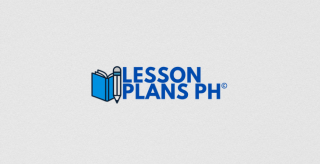DAILY LESSON LOG in EMPOWERMENT TECHNOLOGIES 11 (1st Quarter)
I. Objectives:
LC: Compare and contrast the nuances of varied online platforms, sites, and content to best achieve specific class objectives or address situational challenges. (CS_ICT11/12-ICTPT-Ia-b1)
At the end of the lesson, the learners should be able to:
- Compare and contrast the nuances of varied online platforms, sites, and content.
II. Content: Information and Communication Technology
III. Learning Resources:
- Empowerment Technologies – Grade 11/12 SLM (SOCCSKSARGEN)
- Pages: TG 1–14, LM 1–13, REX Bookstore Textbook pp. 10–25
IV. Procedures:
A. Reviewing previous lesson or presenting the new lesson:
- Start with a Q&A on Web 1.0, 2.0, and 3.0.
- Ask:
- “Which social media platforms do you use most often?”
- “How is Facebook different from YouTube?”
- Motivational Activity: “Are You a Digital Native?” quiz from the module. Let students reflect on their digital habits.
B. Establishing a purpose for the lesson:
- “Today, you will discover how each online platform—whether a blog, social media site, or news site—functions differently, and how to choose the best platform for your needs.”
C. Presenting illustrative examples/instances of the lesson:
- Examples of platform types:
- Social Networks: Facebook, Google+
- Media Sharing: Instagram, YouTube
- Microblogging: Twitter
- Bookmarking: Pinterest
- Blogs/Forums: WordPress, Tumblr
- Show screenshots or demo videos comparing two platforms.
D. Discussing new concepts and practicing new skills #1:
- Group Activity:
- Divide class into 5 groups, each assigned a platform type.
- Tasks:
- Define the platform type
- Identify key features
- Give at least 2 examples
- Explain academic or real-life uses
- Output: Present findings using manila paper or digital slides.
E. Discussing new concepts and new skills #2:
- Class Presentations:
- Ask probing questions:
- “How does this platform enhance communication?”
- “Can this platform be a distraction? Why or why not?”
- Teacher assesses comprehension based on responses.
- Ask probing questions:
F. Developing mastery (guides formative assessment):
- Individual Task:
- Create a 3-column table comparing Web 1.0, 2.0, and 3.0.
- Write 3–5 sentences explaining their differences.
- Creative Option: Design a comic strip showing the evolution of the web with a character interacting with each version.
G. Making generalizations and abstractions about the lesson:
- Ask:
- “What are the key differences between the platforms discussed today?”
- “Which platform would you choose to launch a school campaign, and why?”
- Encourage students to summarize the purpose and best use of each platform.
H. Finding practical applications of concepts and skills in daily living:
- Examples:
- Using YouTube to learn video editing
- Using Pinterest to organize project ideas visually
- Prompt: “How can knowing the strengths of each platform help you in school, work, or hobbies?”
I. Evaluation of Learning:
- True or False / Identification:
- Web 1.0 pages are dynamic and interactive. (False)
- Instagram is a microblogging platform. (False)
- Pinterest is a bookmarking site. (True)
- Short Essay: “What online platform do you use the most and why is it effective for your goals?”
J. Additional activities for application or remediation:
- Write a blog or create a vlog discussing which platform is most useful for learning and why.
(alert-passed) This lesson plan promotes digital literacy, critical thinking, and real-world application. Teachers are encouraged to adapt activities based on learners’ interests and access to technology.
Share to other apps

.png)
